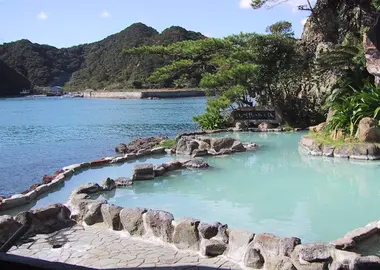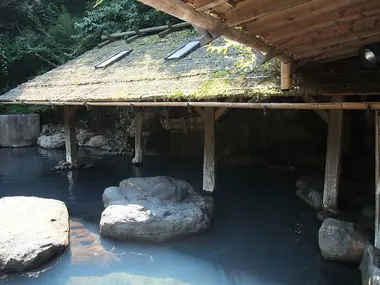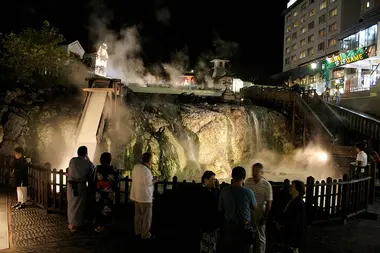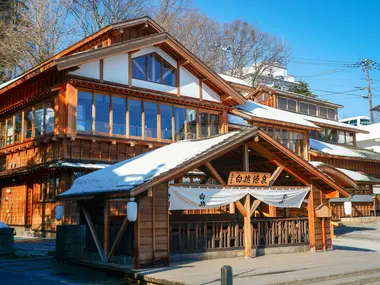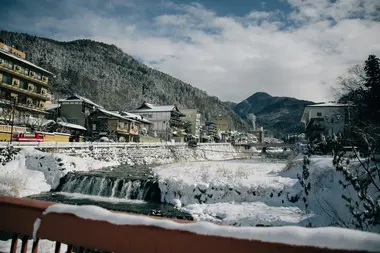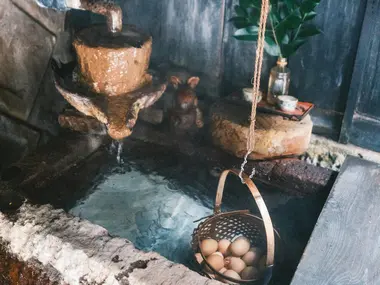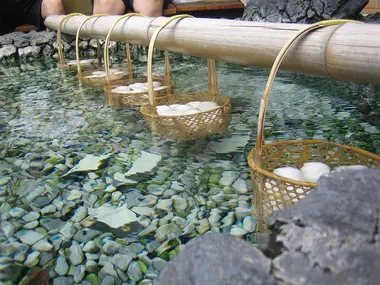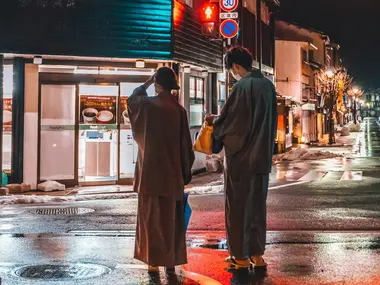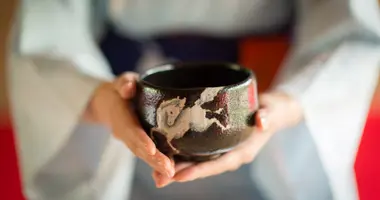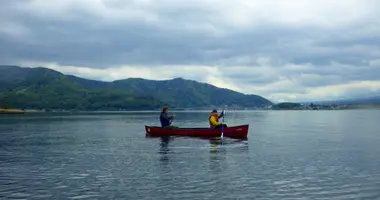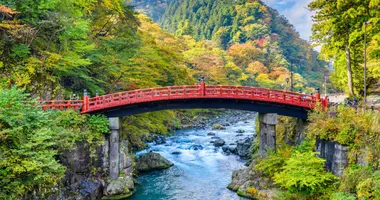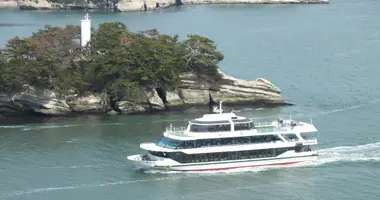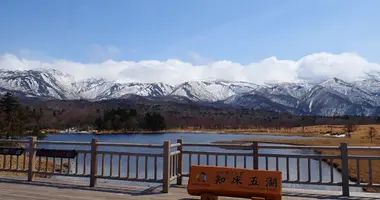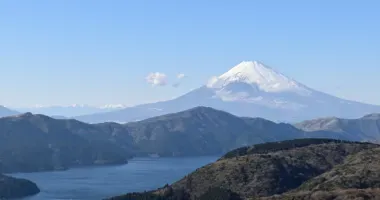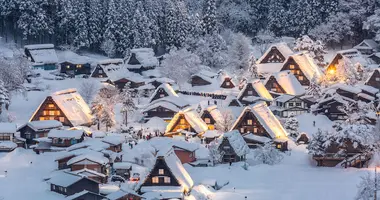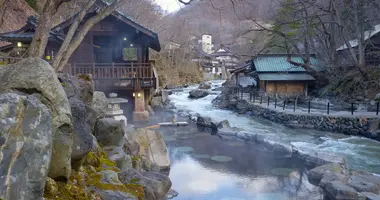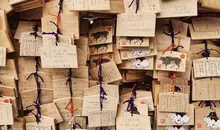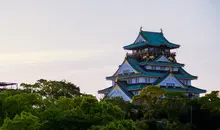Onsen en Japón: Guía de aguas termales naturales y relajación
- Publicado el : 04/01/2024
- Por : Japan Experience
- Youtube
¿Qué son los onsen y por qué son populares en Japón?
Los onsen, que significan "fuentes termales" en japonés, son manantiales naturales calentados por la actividad geotérmica bajo la superficie de la tierra. Con más de 27.000 fuentes termales repartidas por todo el archipiélago, Japón cuenta con una rica historia y cultura centenaria en torno a estos baños ricos en minerales. Sumergirse en un onsen no sólo es una forma muy apreciada de relajarse y desconectar, sino que también es famoso por sus beneficios terapéuticos, que atraen a visitantes de todo el mundo.
La tradición de los baños onsen está profundamente arraigada en la cultura japonesa. Estas fuentes termales, creadas originalmente como retiros de salud, han evolucionado hasta convertirse en una atracción turística de primer orden y han moldeado significativamente las prácticas de baño del país. Familias, parejas y amigos suelen embarcarse en escapadas de fin de semana a ciudades onsen -lugares con una gran concentración de fuentes termales e instalaciones de baño- para disfrutar de las aguas curativas y escapar del estrés de la vida cotidiana.
Tipos de onsen y su composición mineral única
Los onsen de Japón se clasifican en varios tipos según su composición mineral. Cada uno de los 19 elementos químicos designados que definen un onsen ofrece distintos beneficios para la salud, colores e incluso olores a las aguas.
Algunos de los tipos de onsen más comunes son:
- Onsen deazufre (硫黄泉), conocidos por su olor característico y su aspecto lechoso, se cree que ayudan a tratar las afecciones de la piel y la artritis.
- Los onsen decloruro sódico (ナトリウム泉) tienen un contenido en sal similar al del agua de mar y se dice que favorecen la retención del calor y alivian el dolor muscular, los cortes y las quemaduras.
- Los onsen dehierro (鉄泉) se caracterizan por un color herrumbroso y se cree que combaten la anemia cuando se consumen.
- Los onsencarbonatados (炭酸泉) son naturalmente burbujeantes y se sienten suaves en la piel, por lo que son beneficiosos para las dolencias cutáneas.
- Los onsen deradio (ラジウム泉) contienen trazas de elementos radiactivos que pueden ayudar a bajar la tensión arterial y aliviar la gota o los problemas circulatorios.
Las combinaciones de minerales de cada onsen crean experiencias de remojo únicas y con frecuencia se anuncian como parte de su encanto.

Onsen de Kumano
Beneficios para la salud de los baños onsen
Los onsen han sido venerados durante mucho tiempo por sus propiedades reconstituyentes, ya que sus aguas ricas en minerales ofrecen innumerables beneficios para la salud. El calor del agua, que debe ser de al menos 25°C (77°F) para ser clasificada como onsen, favorece la circulación sanguínea y aumenta el metabolismo del cuerpo.
Se cree que la absorción de minerales a través de la piel potencia aún más los efectos positivos del onsen. El azufre puede ayudar a tratar afecciones cutáneas como el eczema o la psoriasis, mientras que el ácido carbónico puede reducir la tensión arterial. Muchos onsen son alabados por su capacidad para aliviar los músculos doloridos, aliviar el dolor articular y favorecer un mejor sueño.
Sumergirse en un onsen también ofrece beneficios para la salud mental. La serena atmósfera y el calmante ritual del baño pueden disipar el estrés, proporcionando una experiencia meditativa y rejuvenecedora que refresca el cuerpo y la mente.
Variedades de experiencias onsen: interiores, exteriores, tradicionales y modernas
Los onsen se presentan en una amplia gama de estilos, atendiendo a distintas preferencias y ofreciendo ambientes variados. Los onsen tradicionales suelen alojarse en rústicas estructuras de madera, con elementos clásicos como pantallas shoji y bañeras de piedra. Las instalaciones modernas pueden presumir de diseños elegantes y minimalistas con servicios de última generación.
Muchos onsen ofrecen tanto baños interiores (内湯, uchiyu) como exteriores (露天風呂, rotenburo). Los baños interiores van desde espacios íntimos y poco iluminados hasta amplias salas de baño con varias piscinas. Los baños al aire libre permiten a los visitantes sumergirse en la naturaleza, rodeados de exuberante vegetación, rocas escarpadas o incluso encaramados a un acantilado con vistas al océano.
Algunos onsen ofrecen servicios adicionales, como saunas, piscinas de agua fría o cascadas que masajean los hombros y la espalda. Experiencias únicas como los baños de arena, donde los bañistas se entierran en arena calentada de forma natural, o las salas de vapor alimentadas directamente por las aguas termales ofrecen formas alternativas de aprovechar los beneficios de las aguas geotermales.
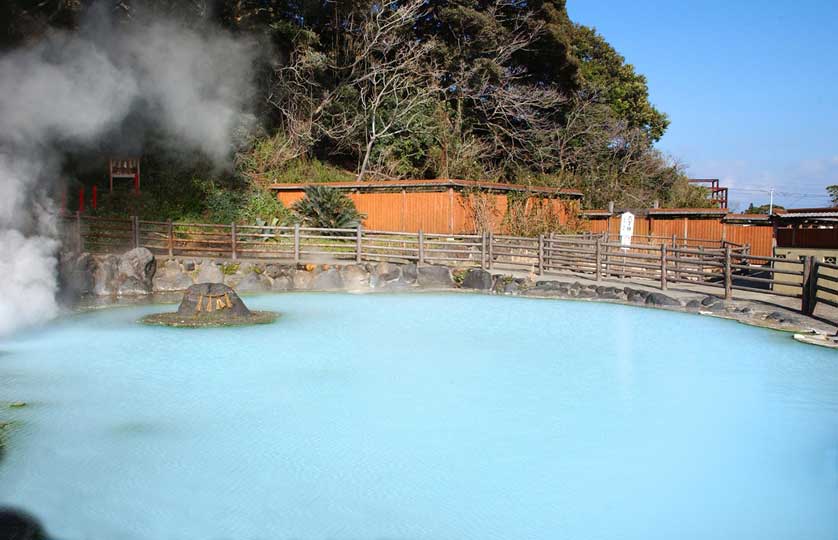
Beppu Onsen, Prefectura de Oita, Kyushu, Japón
Dónde disfrutar del onsen: ryokan, hoteles y baños públicos
Se puede disfrutar del onsen en distintos lugares, desde posadas ryokan tradicionales hasta modernos hoteles y baños públicos. Para vivir la experiencia onsen por excelencia, es muy recomendable alojarse en un ryokan. Estas posadas de estilo japonés suelen disponer de baños termales, que permiten a los huéspedes remojarse a su antojo. Algunos ryokan incluso ofrecen baños privados al aire libre conectados a las habitaciones de los huéspedes para disfrutar de la máxima intimidad y lujo.
Muchos hoteles y complejos turísticos de las ciudades onsen también cuentan con sus propias instalaciones termales, destinadas a los visitantes que prefieren un alojamiento de estilo más occidental. Van desde simples baños a extensos complejos de spa con múltiples piscinas, saunas y servicios de masaje.
Para una experiencia más informal o una excursión de un día, los baños públicos (銭湯, sento) son una gran opción. Los sento, que se encuentran en la mayoría de las ciudades y pueblos, ofrecen la oportunidad de sumergirse en las aguas de los onsen sin necesidad de pernoctar. Algunas ciudades onsen populares, como Kinosaki, incluso ofrecen pases que permiten a los visitantes ir de un baño público a otro para probar una gran variedad.
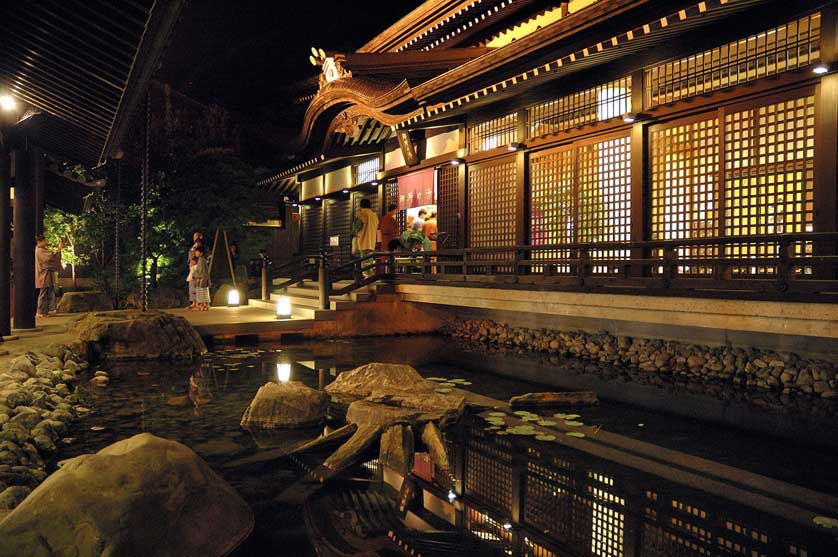
Kinosaki Onsen, Prefectura de Kioto, Japón
Etiqueta y consejos para bañarse en un onsen
Bañarse en un onsen implica seguir ciertas normas de etiqueta y costumbres para garantizar una experiencia agradable para todos. Lo más importante es que los bañistas se limpien bien el cuerpo antes de entrar en las aguas termales. Para ello, las zonas de baño suelen estar equipadas con duchas, taburetes y artículos de aseo.
Los onsen se disfrutan desnudos, con ropa y bañadores prohibidos en las zonas de baño. Los baños masculinos y femeninos suelen estar separados, aunque algunos onsen tradicionales pueden ofrecer baños mixtos. Se utiliza una toalla pequeña para mantener la modestia al caminar entre el vestuario y el baño, pero no debe sumergirse en el agua.
Los bañistas con el pelo largo deben atárselo para evitar contaminar las aguas, y se considera de mala educación dejar que la cabeza se sumerja bajo el agua. La conversación debe mantenerse en voz baja, y se desaconseja el consumo de alcohol antes del baño debido al riesgo de sobrecalentamiento o desmayo.
En caso de duda, observa y sigue el ejemplo de otros bañistas o no dudes en pedir consejo al personal. Respetando la etiqueta adecuada, los visitantes pueden sumergirse plenamente en este entrañable aspecto de la cultura japonesa.
Principales destinos onsen de Japón
En Japón abundan las ciudades onsen, cada una de las cuales ofrece su propio encanto y especialidades. Algunos de los destinos más conocidos son
- Kusatsu Onsen (Gunma): Conocido por sus manantiales de gran volumen y alta acidez y por el icónico yubatake donde se enfría el agua.
- Beppu Onsen (Oita): Famoso por sus "infiernos" o piscinas multicolores, así como por sus abundantes baños de vapor y baños de arena.
- Hakone (Kanagawa): Fácilmente accesible desde Tokio, ofrece impresionantes vistas del monte Fuji desde sus numerosos baños al aire libre.
- Kinosaki Onsen (Hyogo): Un pintoresco pueblo con siete baños públicos y un ambiente encantador y tradicional.
- Ginzan On sen (Yamagata): Una apartada e histórica ciudad con ryokan que bordean un río, creando un ambiente encantador.
- Dogo Onsen (Ehime): Una de las fuentes termales más antiguas de Japón, con una emblemática casa de baños de tres pisos que, según se dice, inspiró la película de Studio Ghibli "Spirited Away".
Estos son sólo algunos de los muchos destinos onsen que esperan ser descubiertos, cada uno de los cuales promete una escapada rejuvenecedora y una inmersión profunda en una de las tradiciones más apreciadas de Japón.
Combinar las visitas a los onsen con otras experiencias culturales japonesas
Una visita a un onsen puede combinarse fácilmente con otras experiencias japonesas por excelencia para un viaje completo y envolvente. Muchas ciudades onsen ofrecen la oportunidad de ponerse ropas tradicionales como el yukata (kimono ligero) y el geta (sandalias de madera) mientras se pasea por las calles llenas de tiendas y restaurantes anticuados.
Disfrutar de la cocina regional es otro punto fuerte de una escapada a un onsen. Muchos ryokan se enorgullecen de sus exquisitas comidas, a menudo con cenas kaiseki (de varios platos) que muestran los ingredientes locales de temporada. Algunos onsen incluso aprovechan el calor geotérmico para cocinar especialidades como tamago onsen (huevos cocidos a fuego lento) o bollos al vapor.
Los visitantes pueden sumergirse aún más en la cultura local participando en actividades tradicionales como ceremonias del té, caligrafía o experiencias artesanales que suelen ofrecerse en ryokan o talleres cercanos. Algunas ciudades onsen albergan también importantes enclaves culturales, como antiguos templos, santuarios o castillos, que ofrecen la oportunidad de adentrarse en la rica historia de Japón.
Para los que buscan aventuras al aire libre, muchos destinos onsen están enclavados en medio de impresionantes paisajes naturales que invitan a ser explorados. Las rutas de senderismo, los miradores panorámicos y los paseos en barco permiten a los visitantes apreciar los paisajes circundantes antes de sumergir sus cansados músculos en las curativas aguas termales.
Combinando una visita a un onsen con otras experiencias culturales, los viajeros pueden crear un viaje polifacético e inolvidable que revele la profundidad y belleza del patrimonio de Japón.
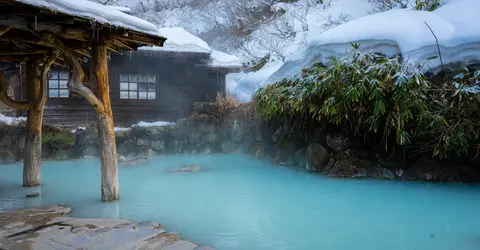
Onsen Japan
Health benefits of soaking in onsen
Onsen have long been revered for their restorative properties, with the mineral-rich waters offering myriad health benefits. The heat of the water, which must be at least 25°C (77°F) to be classified as an onsen, promotes blood circulation and increases the body's metabolism.
The absorption of minerals through the skin is thought to further enhance onsen's positive effects. Sulfur may aid in treating skin conditions like eczema or psoriasis, while carbonic acid can lower blood pressure. Many onsen are lauded for their ability to soothe aching muscles, alleviate joint pain, and promote better sleep.
Soaking in an onsen also offers mental health benefits. The serene atmosphere and calming ritual of bathing can melt away stress, providing a meditative and rejuvenating experience that refreshes both body and mind.
Varieties of onsen experiences: indoor, outdoor, traditional and modern
Onsen come in a wide array of styles, catering to different preferences and offering varied ambiances. Traditional onsen are often housed within rustic wooden structures, featuring classic elements like shoji screens and stone baths. Modern facilities may boast sleek, minimalist designs with state-of-the-art amenities.
Many onsen offer both indoor baths (内湯, uchiyu) and outdoor baths (露天風呂, rotenburo). Indoor baths range from intimate, dimly-lit spaces to expansive bathing halls with multiple pools. Outdoor baths allow visitors to soak while immersed in nature, surrounded by lush greenery, rugged rocks, or even perched on a cliffside with ocean views.
Some onsen facilities provide additional features such as saunas, cold plunge pools, or waterfalls that massage the shoulders and back. Unique experiences like sand baths, where bathers are buried in naturally-heated sand, or steam rooms fed directly by the hot springs offer alternative ways to reap the benefits of the geothermal waters.
Where to enjoy onsen: ryokan, hotels and public bath houses
Onsen can be enjoyed in various settings, from traditional ryokan inns to modern hotels and public bathhouses. For the quintessential onsen experience, staying at a ryokan is highly recommended. These Japanese-style inns often feature on-site hot spring baths, allowing guests to soak at their leisure. Some ryokan even offer private open-air baths connected to guest rooms for the ultimate in privacy and luxury.
Many hotels and resorts in onsen towns also boast their own hot spring facilities, catering to visitors who prefer more Western-style accommodations. These range from simple baths to extensive spa complexes with multiple pools, saunas, and massage services.
For a more casual experience or day trip, public bathhouses (銭湯, sento) are a great option. Found in most cities and towns, sento offer a chance to soak in onsen waters without the need for overnight stays. Some popular onsen towns like Kinosaki even provide passes that allow visitors to hop between several different public baths to sample a variety.
Etiquette and tips for bathing in onsen
Bathing in an onsen involves following certain etiquette and customs to ensure a pleasant experience for all. Most importantly, bathers must thoroughly cleanse their bodies before entering the hot spring waters. Bathing areas are typically equipped with showers, stools, and toiletries for this purpose.
Onsen are enjoyed nude, with clothing and swimsuits prohibited in the bathing areas. Male and female baths are usually separated, although some traditional onsen may offer mixed-gender bathing. A small towel is used for modesty when walking between the changing room and bath, but should not be submerged in the water.
Bathers with long hair should tie it up to avoid contaminating the waters, and it is considered impolite to let your head go underwater. Conversation should be kept quiet, and alcohol consumption before bathing is discouraged due to the risk of overheating or fainting.
When in doubt, observe and follow the lead of other bathers or don't hesitate to ask staff for guidance. By adhering to proper etiquette, visitors can fully immerse themselves in this beloved aspect of Japanese culture.
Top onsen destinations in Japan
Japan abounds with onsen towns, each offering its own unique charm and specialties. Some of the most renowned destinations include:
- Kusatsu Onsen (Gunma): Known for its high-volume, highly acidic springs and iconic yubatake where the water is cooled.
- Beppu Onsen (Oita): Famed for its "hells" or multi-colored pools, as well as abundant steam baths and sand baths.
- Hakone (Kanagawa): Easily accessible from Tokyo, offering stunning views of Mount Fuji from its many outdoor baths.
- Kinosaki Onsen (Hyogo): A picturesque town with seven public bathhouses and a charming, traditional atmosphere.
- Ginzan Onsen (Yamagata): A secluded, historical town with ryokan lining a river, creating an enchanting ambiance.
- Dogo Onsen (Ehime): One of Japan's oldest hot springs with an iconic, three-story bathhouse said to have inspired Studio Ghibli's "Spirited Away".
These are just a few of the many onsen destinations waiting to be discovered, each promising a rejuvenating escape and a deep dive into one of Japan's most cherished traditions.
Combining onsen visits with other Japanese cultural experiences
A visit to an onsen can easily be combined with other quintessential Japanese experiences for a well-rounded and immersive trip. Many onsen towns offer opportunities to don traditional clothing such as yukata (lightweight kimono) and geta (wooden sandals) while strolling the streets lined with old-fashioned shops and restaurants.
Indulging in regional cuisine is another highlight of an onsen getaway. Many ryokan pride themselves on their exquisite meals, often featuring kaiseki (multi-course) dinners that showcase local, seasonal ingredients. Some onsen even use the geothermal heat to cook specialties like onsen tamago (slow-cooked eggs) or steam buns.
Visitors can further immerse themselves in the local culture by participating in traditional activities like tea ceremonies, calligraphy, or crafting experiences often offered at ryokan or nearby workshops. Some onsen towns are also home to important cultural sites such as ancient temples, shrines, or castles, providing a chance to delve into Japan's rich history.
For those seeking outdoor adventures, many onsen destinations are nestled amidst stunning natural scenery that beckons to be explored. Hiking trails, scenic viewpoints, and boat rides allow visitors to appreciate the surrounding landscapes before soaking their weary muscles in the healing hot spring waters.
By combining an onsen visit with other cultural experiences, travelers can create a multi-faceted and unforgettable journey that reveals the depth and beauty of Japan's heritage.

